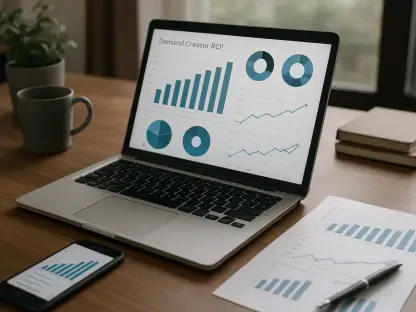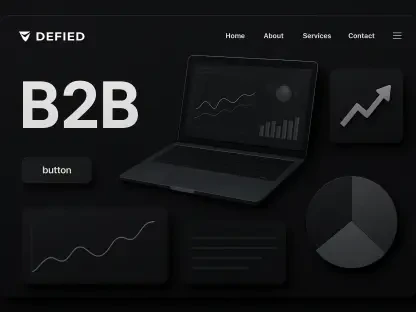The Rise of Social Media Influencers in Government Communication
Imagine a world where critical public health messages, once broadcast through static radio announcements or printed flyers, now resonate through the dynamic, personal feeds of social media influencers, reaching millions in mere hours. This scenario is no longer a distant vision but a present reality, as governments at state, local, and federal levels increasingly partner with these digital voices to amplify outreach and engagement. The shift signifies a profound adaptation to the digital age, where traditional communication channels are losing ground to platforms that dominate the attention of younger and diverse demographics.
This transition from conventional media to social media platforms reflects a broader change in media consumption habits. With a significant portion of the population, especially millennials and Gen Z, consuming information via short-form videos and personalized content, governments recognize the need to meet audiences on their turf. Social media influencers, often seen as relatable peers rather than distant authorities, serve as trusted community messengers, capable of bridging gaps that traditional methods struggle to close, particularly in underserved or culturally distinct communities.
The trend gained momentum during the COVID-19 pandemic, when urgent health messaging necessitated innovative outreach. Local influencers emerged as key players, working alongside government communication teams to combat misinformation and promote vaccination efforts. This period marked the beginning of a strategic pivot, establishing influencers not just as temporary campaign tools but as integral components of public dialogue, reshaping how authorities connect with citizens in an era of digital dominance.
Current Trends and Market Insights in Government-Influencer Partnerships
Key Trends Shaping the Strategy
A defining trend in government communication is the institutionalization of influencer marketing, evolving from sporadic, crisis-driven campaigns to structured, long-term strategies. This shift indicates a commitment to embedding digital outreach within core communication frameworks, ensuring that social media remains a consistent channel for public interaction. Unlike fleeting initiatives, this approach prioritizes sustained engagement, allowing for deeper community connections over time.
Another notable pattern is the preference for local, authentic voices over celebrity figures with massive followings. Governments are tapping into influencers who embody the cultural and demographic fabric of their target audiences, fostering trust through shared experiences and linguistic familiarity. This focus on relatability enhances the credibility of messages, particularly in communities where skepticism toward official channels may prevail.
The scope of influencer use has also expanded significantly beyond initial health-focused efforts. While the pandemic spotlighted vaccine education, current applications include promoting childcare assistance programs and enhancing city branding initiatives. This diversification demonstrates the versatility of influencers as tools for addressing varied public needs, from social services to urban promotion, signaling a broader acceptance of digital messengers across multiple sectors.
Data and Growth Projections
Recent data underscores the growing reliance on influencers within government marketing efforts. According to industry trackers, requests for proposals mentioning influencers have stabilized at approximately 5% of marketing proposals since the trend’s notable rise in recent years. This consistency suggests a permanent fixture in communication budgets, even as funding sources like pandemic relief diminish, highlighting the perceived value of such partnerships.
Despite financial constraints impacting campaign scale, the cost-effectiveness of influencer marketing compared to traditional media continues to drive adoption. Projections indicate that from 2025 to 2027, the integration of influencers is likely to grow, fueled by successful case studies demonstrating high reach and engagement at lower costs. Governments are expected to refine selection processes to maximize impact, focusing on measurable outcomes to justify expenditures.
Looking ahead, the trajectory points to broader implementation as more agencies witness the benefits of targeted digital campaigns. With evolving tools for analytics and audience segmentation, the ability to tailor messages to specific groups will further enhance effectiveness. This forward-looking perspective anticipates a landscape where influencer partnerships become a standard component of public outreach, adapting to shifting digital habits and community needs.
Challenges in Implementing Influencer Campaigns for Governments
Navigating the integration of influencers into government communication is not without hurdles, with funding constraints posing a significant barrier. As emergency budgets dwindle, agencies must creatively allocate resources to sustain digital campaigns, often competing with other pressing priorities. This financial limitation can restrict the scope and frequency of initiatives, challenging the consistency of outreach efforts.
Beyond monetary issues, a lack of digital literacy among some government teams complicates the management of influencer partnerships. Crafting campaigns that resonate on social platforms requires a nuanced understanding of trends and audience behavior, skills not universally present within traditional communication staff. Addressing this gap necessitates targeted training to equip personnel with the tools to oversee modern outreach effectively.
Skepticism from both communities and officials also presents an obstacle, as questions arise about the credibility of influencers as legitimate channels for official messaging. Ensuring authenticity in partnerships is critical, as is identifying local figures who genuinely align with target demographics. Overcoming these concerns involves establishing clear selection criteria and fostering transparency to build trust in the process, ensuring campaigns are perceived as genuine rather than contrived.
Regulatory and Ethical Considerations in Government-Influencer Collaborations
The regulatory landscape surrounding influencer marketing in government contexts demands careful navigation to maintain public confidence. Transparency requirements mandate clear disclosures of sponsored content, ensuring audiences understand the nature of partnerships. Adhering to these guidelines is essential to prevent perceptions of manipulation and to uphold the integrity of public messages.
Ethical considerations further complicate these collaborations, particularly the risk of misinformation, especially in sensitive areas like public health. Governments must ensure influencers adhere to factual accuracy while preserving their authentic voice, a balance that requires rigorous vetting and ongoing monitoring. Establishing ethical standards for content creation helps mitigate potential missteps that could undermine campaign objectives.
Compliance with evolving social media platform policies also shapes how campaigns are structured. As platforms update rules on advertising and content moderation, governments must adapt strategies to align with these changes, ensuring uninterrupted outreach. Developing robust frameworks for influencer selection and campaign evaluation is vital to navigate this dynamic environment, reinforcing trust and accountability in public communications.
Future Outlook for Government Use of Social Media Influencers
The horizon for influencer use in government communication appears expansive, with potential for adoption across a wider array of public sectors. Beyond health and civic branding, areas such as environmental education and disaster preparedness could benefit from targeted digital campaigns, leveraging influencers to amplify critical information. This broadening application suggests a versatile toolset for addressing diverse governance challenges.
Emerging technologies are poised to enhance these strategies, with advanced analytics offering deeper insights into campaign performance. Artificial intelligence could streamline the identification of suitable influencers by analyzing demographic fit and engagement metrics, optimizing resource allocation. Such innovations promise to refine outreach, ensuring messages reach intended audiences with greater precision.
Shifting consumer preferences toward authentic, community-driven content will likely influence government priorities, emphasizing relatability in communication. Global digital trends and economic conditions may further impact scalability, encouraging innovation in cost-effective engagement methods. As these external factors evolve, adaptability will remain key, positioning influencer campaigns as dynamic solutions for future public interaction needs.
Conclusion: Transforming Public Engagement Through Influencers
Reflecting on the exploration of influencer use in government communication, it becomes evident that this approach redefines how public messages are delivered and received. The journey highlights a transformative shift, where digital voices turn traditional outreach into meaningful dialogues, fostering connections with diverse populations through authenticity and cultural resonance.
Looking ahead, actionable steps emerge as critical for sustaining this momentum. Governments are encouraged to prioritize investments in digital expertise, ensuring teams are equipped to navigate the complexities of social media landscapes. Diversifying outreach methods to include a spectrum of voices and platforms stands out as a necessary evolution, addressing inclusivity in every campaign.
Furthermore, forging long-term partnerships with influencers promises to solidify trust and consistency in messaging. By focusing on scalable frameworks and embracing technological advancements, authorities can anticipate and adapt to changing community needs. This strategic direction not only cements the role of influencers in public engagement but also paves the way for innovative, impactful communication in the years to come.









